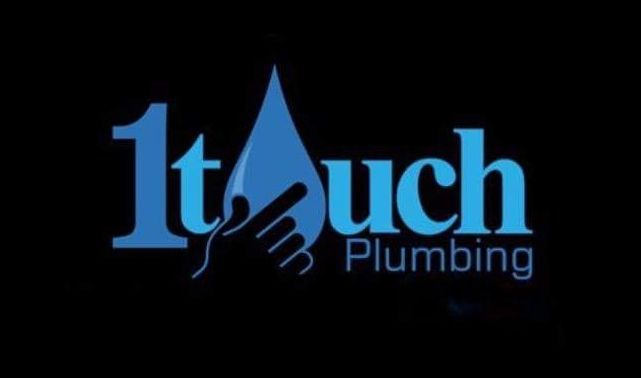5 Main Causes Of Low Water Pressure In Your Home
Low water pressure can turn everyday tasks like showering, washing dishes, or watering the garden into a hassle. It’s often a sign of underlying plumbing issues that must be addressed before they worsen. Common causes include blocked pipes, faulty pressure regulators, or ageing hot water systems. In this blog, we’ll explain the main reasons for low water pressure and how professional solutions can restore consistent and efficient water flow in your home.
On this page:
1. Blocked or Corroded Pipes
Blocked or corroded pipes are among the most common culprits of low water pressure. Over time, pipes in your plumbing system accumulate minerals, sediment, and rust, obstructing water flow. This is especially common in areas with hard water, where minerals like calcium and magnesium build up quickly.
Key Causes of Pipe Blockages:
- Mineral Build-up: Hard water leaves mineral deposits inside pipes, narrowing the pathway for water to flow.
- Rust & Corrosion: Older metal pipes are prone to corrosion, particularly in homes with outdated plumbing.
- Foreign Debris: Dirt, sediment, and small obstructions can enter the system, further slowing the water supply.
Solutions:
Professional plumbers can use high-pressure pipe cleaning and inspections to clear blockages or identify corroded pipes. In severe cases, pipe replacements with modern materials like PVC or copper may be necessary to restore full water flow.
Did you know? A blocked pipe can disproportionately affect hot water system pressure, especially if sediment build-up occurs within your hot water tank.
2. Faulty or Ageing Hot Water Systems
If you’ve noticed a significant drop in hot water pressure specifically, your hot water system might be the problem. Hot water systems, particularly electric ones, can lose efficiency over time due to sediment build-up, worn-out components, or general ageing.
Common Signs of Hot Water System Issues:
- Inconsistent Pressure: Hot water pressure is weaker than cold water.
- Sediment Accumulation: Minerals settle at the bottom of the hot water tank, restricting water flow.
- Faulty Pressure Relief Valves: A malfunctioning valve can lead to reduced pressure or leaks.
Solutions:
- System Flushing: Removing sediment build-up improves efficiency and restores pressure.
- Valve Inspection/Replacement: Pressure relief valves ensure safe operation and proper flow.
- Upgrades: If your system is over 10 years old, consider upgrading to a newer, energy-efficient model.
By scheduling routine maintenance, you can keep your Townsville hot water systems performing at their best, saving you from unexpected disruptions.
3. Pressure Regulator Issues
Your home’s pressure regulator is vital in maintaining consistent water pressure. If this component fails, you may experience low or fluctuating pressure throughout your plumbing system.
Symptoms of a Faulty Pressure Regulator:
- Sudden Pressure Drop: Water flow weakens abruptly across all taps and appliances.
- Inconsistent Pressure: Pressure fluctuates depending on the time of day or water usage.
- Noisy Pipes: Strange sounds like banging or whistling may indicate pressure irregularities.
Solutions:
Professional plumbers can test your regulator’s performance and either recalibrate or replace it. Diagnosing regulator issues can be difficult without proper tools, so it’s best left to experts.
Quick Tip: Regular pressure checks can help detect regulator problems before they cause larger plumbing issues.
Water leaks, whether small or large, are a major contributor to low water pressure. Even minor leaks can reduce water supply while simultaneously increasing your water bills. Hidden leaks often go unnoticed because they occur in walls, ceilings, or underground pipes.
Signs of a Hidden Leak:
- High Water Bills: A sudden or unexplained spike in water usage.
- Damp Spots: Water stains on walls, floors, or ceilings.
- Reduced Pressure: Noticeable drop in water strength, particularly during peak usage.
Solutions:
Professional leak detection involves advanced tools like thermal imaging, acoustic detection, and pressure tests to pinpoint leaks without invasive methods. Prompt repairs restore water pressure and prevent structural damage to your home.
Remember: Leaks are especially problematic in hot water systems, as they waste heated water and reduce overall efficiency.
Shared water supply lines could explain your low water pressure if you live in an apartment complex, duplex, or multi-unit home. When multiple units use water simultaneously—like during peak hours—the demand can exceed the system’s capacity, leading to weaker pressure.
Key Challenges of Shared Water Supply:
- Competing Demands: Increased usage reduces available water pressure for individual units.
- Old Infrastructure: Outdated or undersized pipes may struggle to handle modern water demands.
- Inconsistent Water Flow: Pressure drops when multiple taps or appliances are used.
Solutions:
- Water System Upgrades: Upgrading to larger-capacity pipes or a pressure-boosting system improves flow.
- Pressure Balance Adjustments: Professional plumbers can assess and optimise the shared supply for better consistency.
- Dedicated Lines: Installing individual water lines may be a long-term solution for homes with persistent issues.
Expert Advice: A professional assessment can determine the best course of action to resolve pressure problems in shared supply systems.
Water Pressure Problems? Let’s Help!
Low water pressure can frustrate simple tasks like showering or washing dishes. At 1touch Plumbing, we handle hot water system installations, repairs, and ongoing maintenance for homes across Townsville. Whether your system needs a tune-up, an upgrade to a modern electric solution, or troubleshooting for pressure issues, we’re here to help. Contact us today!










